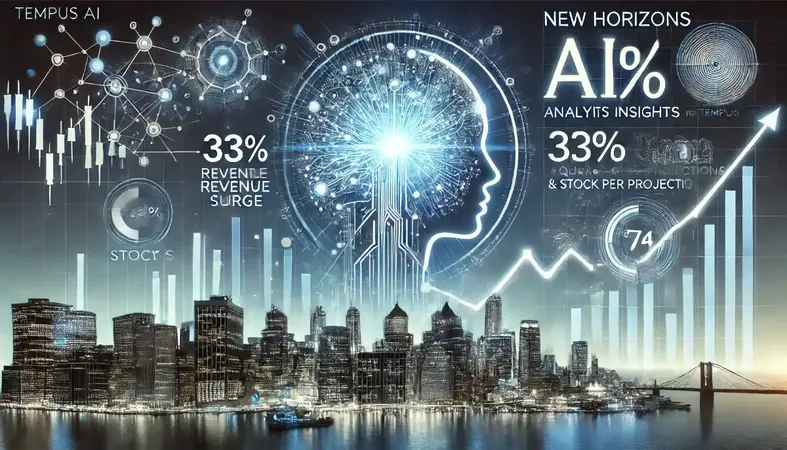Manus AI: The New China's Fully Autonomous AI Agent
By admin | Mar 13, 2025 | 5 min read

Artificial intelligence is evolving fast, and China’s latest breakthrough has Silicon Valley paying close attention. Meet Manus AI, a fully autonomous AI assistant developed by Chinese startup Butterfly Effect. Unlike traditional chatbots, Manus doesn’t just assist—it acts. It can analyze data, generate reports, and even order groceries, all without human intervention.
Some are calling it “China’s second DeepSeek moment”, and if it delivers on its promises, it could shake up the AI landscape. But what exactly is Manus AI, and what does it mean for the future? Let’s dive in.
What Is Manus AI?
Manus AI takes its name from the Latin word for "hand," symbolizing its ability to act autonomously. According to Butterfly Effect’s chief scientist, Yichao “Peak” Ji, this isn’t just another chatbot—it’s a “completely autonomous agent.”
Unlike AI assistants like ChatGPT or Gemini, which require human input for every step, Manus is designed to think, plan, and execute tasks independently. It can handle complex workflows without needing constant oversight.
“Manus AI is the next paradigm of human-machine collaboration and potentially a glimpse into AGI,” says Ji.
Currently, Manus AI is in private beta, and access is invite-only. But its potential has already sparked excitement—and concern—across the industry.
What Can Manus AI Do?
AI agents are not new, but most require human intervention at some level. Manus is different—it operates autonomously, executing tasks like:
- Performing in-depth research and analysis
- Generating detailed reports and business documents
- Managing workflows and automating repetitive tasks
- Creating and executing business strategies
- Designing and developing applications
- Making purchases and handling logistics
One of the most fascinating use cases highlighted on Manus AI’s official website is its ability to plan detailed travel itineraries. In one example, it created a full seven-day Japan trip for a hypothetical Seattle couple, even recommending “Proposal Opportunity” locations.
Other examples include:
- A business card design inspired by Apple’s branding
- A three-second sound effect mixing bird chirps and steam sounds
- Automated coding and software deployment
These examples might seem minor, but they hint at something much bigger: an AI agent capable of replacing human decision-making in ways never seen before.
How Does Manus AI Work?
Unlike some AI systems that rely on a single model, Manus AI is a multi-agent system, meaning it integrates several specialized AI models to perform different tasks. Some of the major large language models (LLMs) it currently utilizes include:
- Claude 3.5 Sonnet – A high-performing language model from Anthropic
- Qwen – A powerful model developed by Alibaba’s AI team
Butterfly Effect is reportedly looking to upgrade Manus to the latest version of Claude, possibly Claude 3.7, to improve its performance further.
Another key feature of Manus AI is its memory recall. Unlike traditional chatbots that forget previous interactions, Manus retains knowledge from past tasks and interactions. This allows it to refine its processes over time. For example:
- If you ask it to generate a report and export it as a PDF, it will remember to do the same for similar tasks in the future.
- If you give it specific formatting instructions, it will recall and apply them automatically in later assignments.
What Makes Manus AI Different?
The biggest differentiator for Manus AI is its ability to act without human input. While AI tools like ChatGPT or Gemini require prompts and adjustments, Manus is designed to think, decide, and execute on its own. This raises exciting possibilities—but also serious concerns.
Supporters argue that Manus represents a breakthrough in artificial general intelligence (AGI), bringing us closer to AI that can function at a human level.
Critics, however, worry about its potential downsides. As Bradford Levy, an assistant professor at the University of Chicago Booth School of Business, warns:
“There is plenty of evidence that Manus doesn’t get things right on the first try or gets stuck in infinite loops… there’s a good chance it won’t meet expectations.”
What Does This Mean for the AI Race?
Manus AI’s release is part of a broader trend of Chinese companies catching up—and in some cases, overtaking—Western tech giants in AI innovation.
China’s DeepSeek, for example, has already emerged as a serious competitor to OpenAI. With Manus AI, Butterfly Effect could be positioning itself as a new leader in the field of autonomous AI agents. This could spark a fresh wave of competition as U.S. companies race to develop their own fully autonomous systems.
Final Thoughts: Is Manus AI the Future?
While it’s too early to say whether Manus AI will live up to the hype, it’s clear that the age of autonomous AI agents has begun. If successful, it could transform industries by automating complex tasks, eliminating inefficiencies, and even challenging the very idea of human-led decision-making.
But with great power comes great responsibility. As AI becomes more autonomous, questions about ethics, regulation, and control become more urgent than ever.
For now, all eyes are on Manus AI—and what it does next.
What’s Your Take?
Do you think fully autonomous AI agents like Manus are the future? Or do they pose more risks than rewards? Share your thoughts in the comments below!
Comments
Please log in to leave a comment.




No comments yet. Be the first to comment!